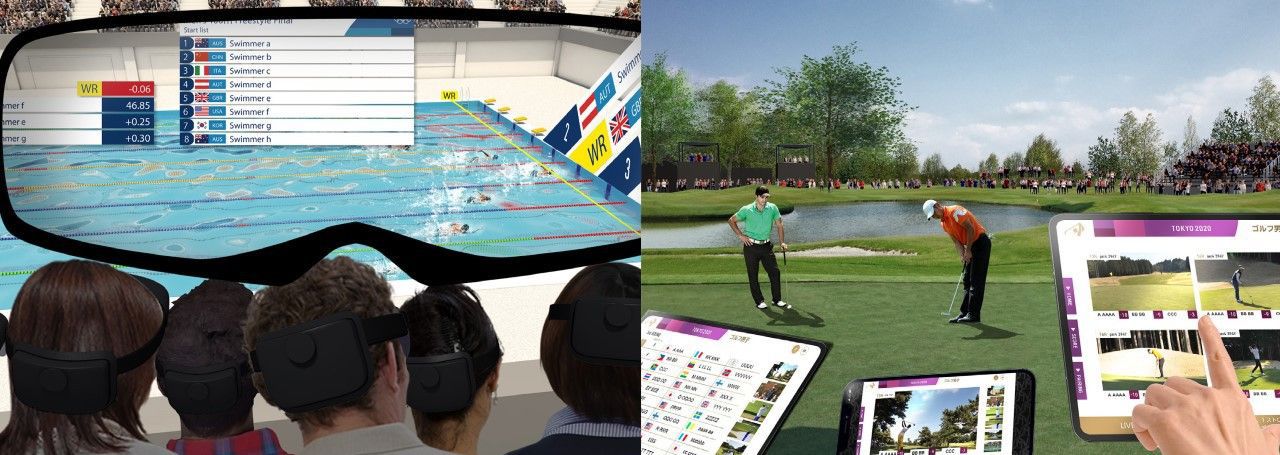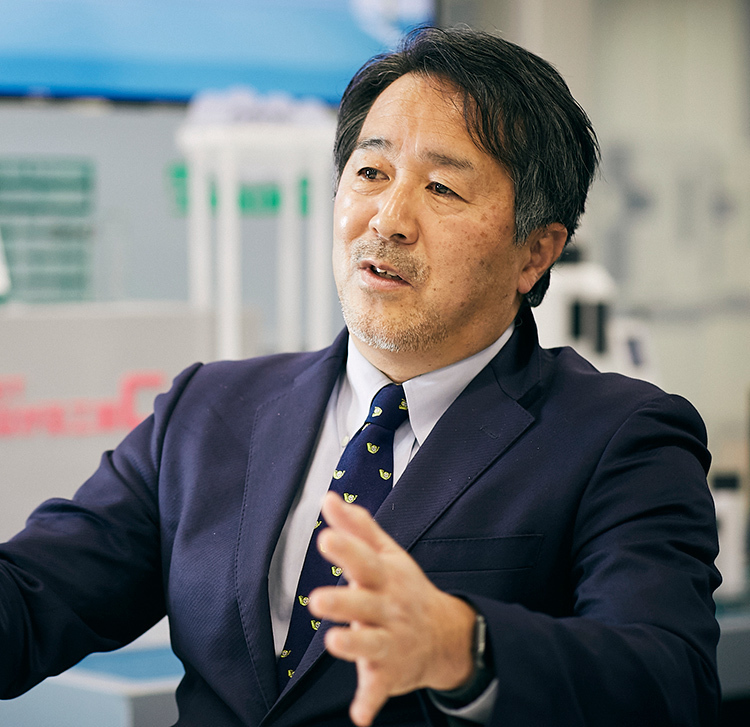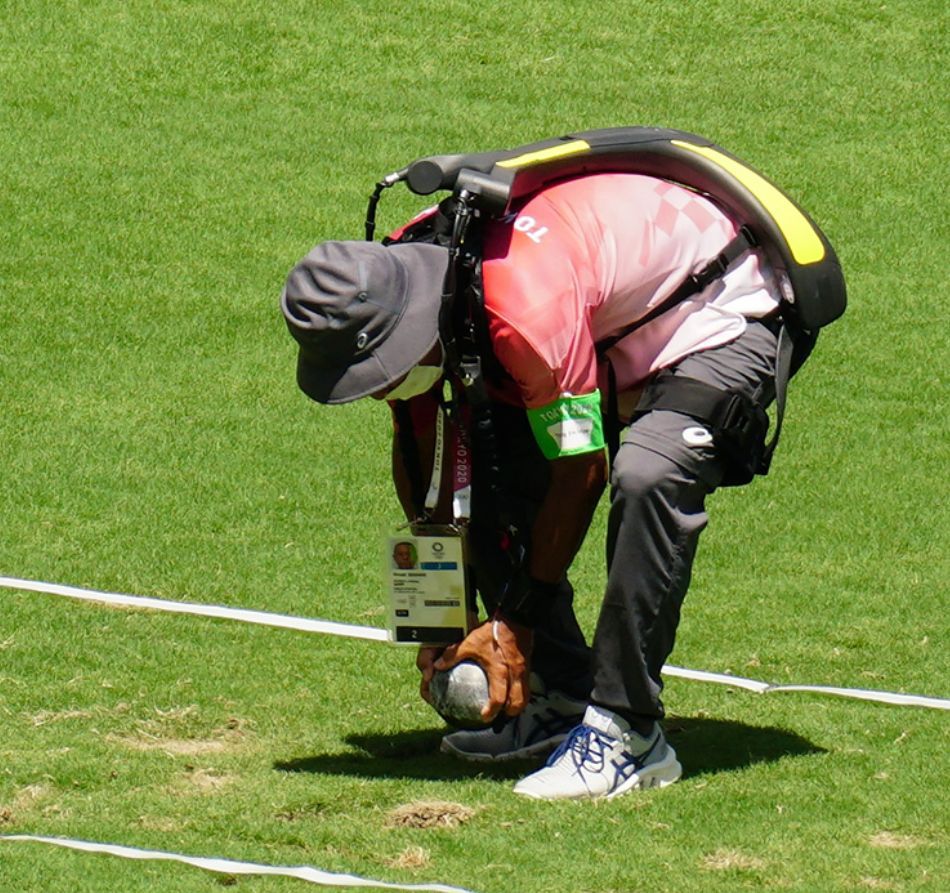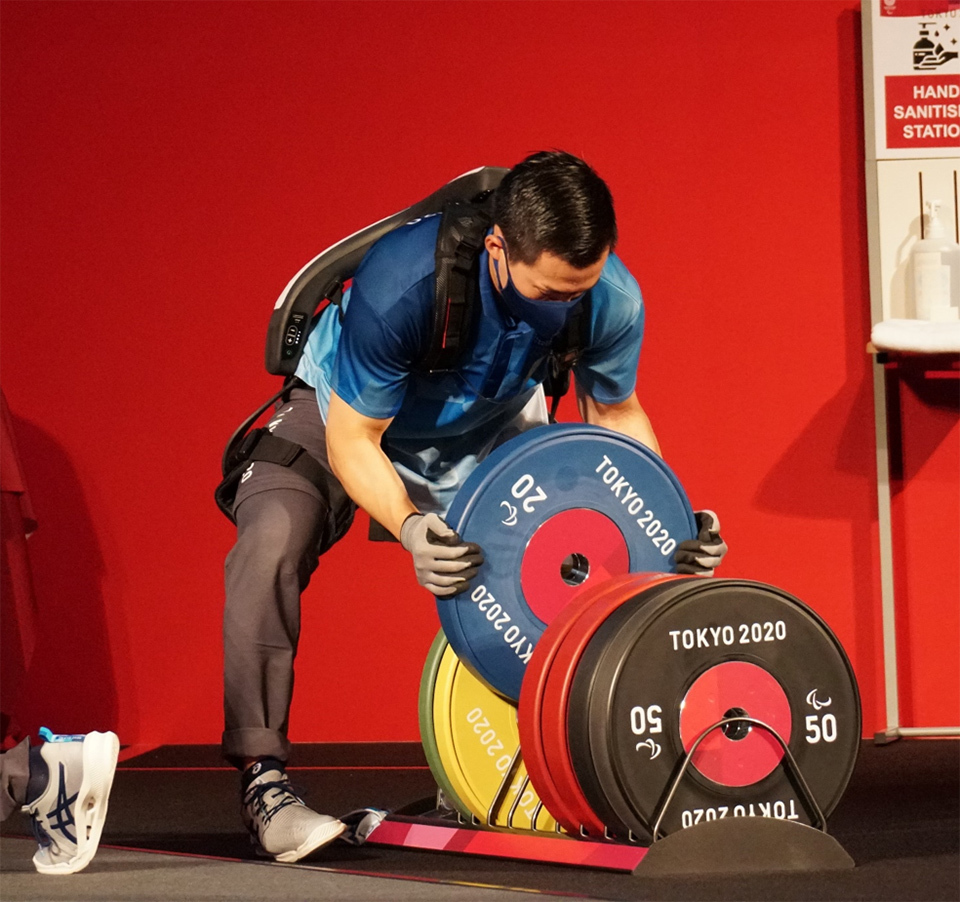At this year’s Tokyo 2020 Games, 5G technology enhanced the viewing experience, while robots assisted operations at various events, entertaining all those involved. Such cutting-edge technologies point to the exciting future that awaits us.

Left: Sports spectatorship is evolving with the use of high-speed, high-capacity 5G technology. Spectators at swimming competitions gain access to real-time data. TOKYO 2020
Right: Spectators at a golf competition can simultaneously view multiple players scattered along the course on a hand-held device. TOKYO 2020
The Tokyo 2020 Olympic and Paralympic Games set out to be the most innovative Games ever and bring a positive legacy to future generations. 5G technology and robotics, finely tuned to meet the needs of the Games, expertly demonstrated what the future has in store by providing behind-the-scenes support for the massive event and enhancing the viewing experience.

Left: The autonomous FSR has a built-in sensor that can detect obstacles. It selects the optimal route to a chosen object and retrieves it in the minimum amount of time. TOKYO 2020
Center: Human Support Robots (HSRs) were also equipped with cameras to take commemorative photos at various locations, and were popular among competitors and volunteer staff. TOKYO 2020
Right: The HSR, equipped with a foldable arm, was developed to assist physically impaired and elderly persons. At Tokyo 2020, HSRs distributed water bottles and collected garbage. TOKYO SHIMBUN
The increased bandwidth and higher capacity made possible by 5G networks paved the way for a new type of experience for viewers. At a swimming competition venue, for example, 5G’s low latency and AR (augmented reality) technology sent real-time data about contestants and their relative positions to viewers wearing goggle-type devices. The data informed the spectators instantaneously about which swimmers were leading at any moment, letting them cheer on the athletes all the more enthusiastically. At a golf competition, a “multi-live broadcasting system” allowed spectators with hand-held tablets to watch, in real time, the participating golfers scattered across various holes along the golf course. Although the decision to hold Tokyo 2020 without spectators limited those experiences to a small number of officials, the few who were there could glimpse the future of sports viewing.

Tokyo 2020 Robot Project leader HIRUKAWA Hirohisa reflects, “The harmonious coexistence of human beings and robots depends on whether humans utilize robots wisely. In that respect, I think Tokyo 2020 represented an excellent example of useful robots in action.”
Robots also played a remarkable role at Tokyo 2020. HIRUKAWA Hirohisa, a robotics specialist of the National Institute of Advanced Industrial Science and Technology (AIST) and leader of the Tokyo 2020 Robot Project, says, “We hoped that this year’s Games would be more than just a showcase for technology. Our aim was to show how useful robots can be.” Robotic support in conducting various events garnered special attention. For instance, Field Support Robots (FSRs) retrieved and transported projectiles at events such as the javelin throw and shot put. The robots could move autonomously, avoiding obstacles and choosing optimal routes, thus saving time and reducing the workload for support personnel. Similarly, the Power Assist Suit, which can relieve wearers of up to 10 kg of a physical burden, played an important part in powerlifting competitions at the Paralympic Games. Support personnel, who wore the suit like a backpack, were able to change the powerlifting plates on barbells with speed and ease. “The staff were incredulous at first, but the suit gained a reputation for being easy to use and reducing fatigue,” recalls ARAI Koji, senior director of the Innovation Promotion Office of the Tokyo Organizing Committee of the Olympic and Paralympic Games.


Power Assist Suits reduced back stress and helped officials pick up shots at shot-put venues, while also aiding personnel in the exchange of weight plates during powerlifting competitions. TOKYO 2020
Because the Games took place during the COVID-19 pandemic, being “safe and secure” was an important theme. Considering its potential concerning avoiding unnecessary human contact, robotic technology thus found itself useful to an unprecedented degree. Hirukawa reflects, “We realized that robots could take over a great many tasks in security, cleaning, and in guiding visitors. From now on, we will be able to reduce needless contact between people by using robots.”
Tokyo 2020 illustrated a fast-approaching future characterized by advanced technologies such as 5G and robotics. Japanese technology continues to evolve and will support efforts toward a more productive lifestyle.






























